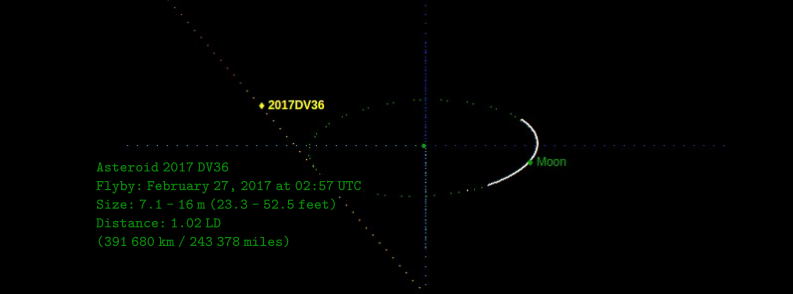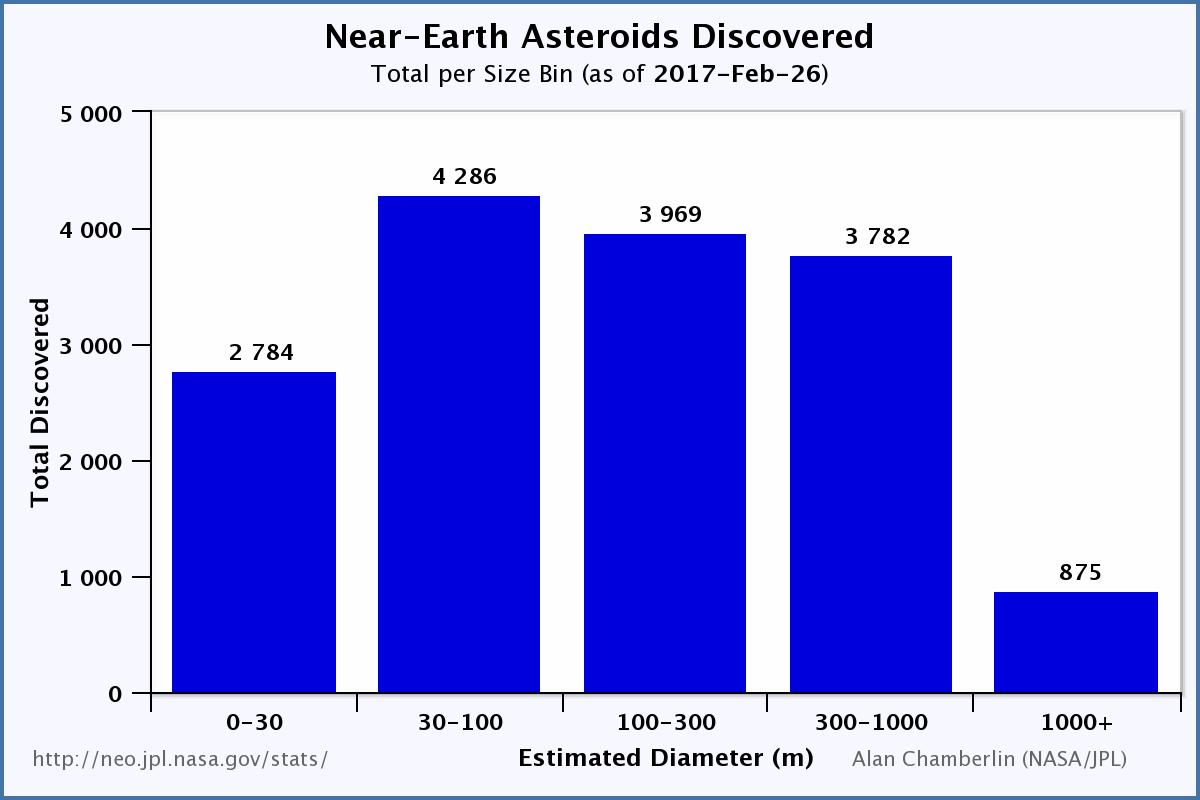Asteroid 2017 DV36 flew past Earth at 1.02 LD

A newly discovered asteroid named 2017 DV36 flew past Earth at 1.02 LD (391 680 km / 243 378 miles) on February 27, 2017. Its closest approach occurred at 02:57 UTC.
2017 DV36 belongs to the Apollo group of asteroids. It was discovered by Mt. Lemmon Survey on February 25, two days before its closest approach to Earth.
Its estimated diameter, based on the object's absolute magnitude, is between 7.1 and 16 m (23.3 – 52.5 feet), and it flew by us at a speed (relative to the Earth) of 10.78 km/s.
[ Ephemeris | Orbit Diagram | Orbital Elements | Physical Parameters | Close-Approach Data ]
Since January 9, 2017, 6 known near-Earth asteroids flew past Earth within 1 LD. If this one was just ~0.3 LD closer to Earth, it would be the 7th.
As of February 25, there are 15 802 known near-Earth objects, 15 696 of them are near-Earth asteroids (NEAs). Of those, 8 533 belong to the Apollo group of Asteroids, Earth-crossing asteroids that have an orbital semi-major axis greater than that of the Earth (> 1 AU) but perihelion distances less than the Earth's aphelion distance (q < 1.017 AU).
Since the start of the year, we have discovered 285 near-Earth objects. All off them were asteroids.
The following chart shows the current total number of known NEAs grouped according to their estimated sizes. The first size bin represents NEAs smaller than ~30m (98 feet) in diameter. The last bin represents NEAs with diameters larger than ~1km (0.62 miles).

References:
- Asteroid 2017 DV36 at Minor Planet Center, NEO/JPL, ESA/SSA
Featured image: ESA/NEO Coordination Centre. Edit: TW

Seriously! How many Asteroids/Meteors fly by Earth this frequent. I was led to believe it was rare, and these reports are vary frequent with no news media talking about. I’m not understanding, why people aren’t talking about this?
People are, mass media not so much. From time to time they pick up on something, but it’s rare.